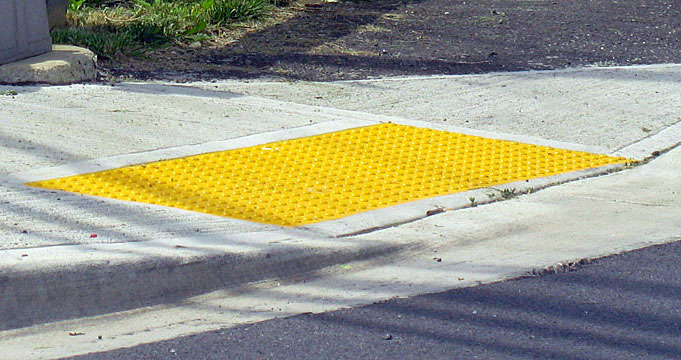Truncated Domes: A Guide to Types and Applications

Truncated domes, also known as detectable warnings or tactile paving, are specialized surfaces designed to alert visually impaired individuals to potential hazards in their environment. These raised surfaces, typically composed of small, truncated cones, provide a distinct tactile and auditory cue when traversed with a cane or foot traffic. This article will explore the various types of truncated domes and their specific applications.
Types of Truncated Domes
- Standard Truncated Domes:
- Appearance: These are the most common type, consisting of a uniform pattern of closely spaced, truncated cones.
- Application: Primarily used to warn of hazards at the edge of platforms, such as train or subway platforms, and at curb cuts to alert pedestrians to the transition from sidewalk to street.
- Directional Truncated Domes:
- Appearance: Similar to standard domes but arranged in parallel lines, creating a distinct directional pattern.
- Application: Used to guide pedestrians along specific pathways, such as in airports, train stations, or large public spaces.
- Dome and Bar Truncated Domes:
- Appearance: Combines standard truncated domes with raised bars running perpendicular to the direction of travel.
- Application: Often used at the end of platform edges or at the top of ramps to indicate a change in direction or a potential hazard.
- Dome and Dot Truncated Domes:
- Appearance: Features standard truncated domes interspersed with raised dots.
- Application: Typically used to indicate changes in direction or to provide additional tactile cues for visually impaired individuals.
Applications of Truncated Domes
Truncated domes are essential for creating accessible and inclusive environments for people with visual impairments. Their applications are widespread and include:
- Transportation:
- Train and Subway Platforms: Warn the edge of the platform, preventing accidental falls onto the tracks.
- Bus Stops: Indicate the location of the bus stop and potential hazards around it.
- Curb Cuts: Alert pedestrians to the transition from sidewalk to street, ensuring safe crossing.
- Airport Terminals: Guide passengers through the terminal and to their gates.
- Public Spaces:
- Pedestrian Crosswalks: Indicate the presence of a crosswalk and help visually impaired individuals navigate intersections safely.
- Stairways and Ramps: Warn elevation changes and provide directional guidance.
- Public Buildings: Guide individuals through lobbies, hallways, and other areas within the building.
- Other Applications:
- Residential Areas: Used in private homes and apartment complexes to improve accessibility and safety.
- Educational Facilities: Implemented in schools and universities to create inclusive learning environments.
- Retail Spaces: Enhance accessibility for visually impaired customers in shopping malls and stores.
Benefits of Truncated Domes
- Enhanced Safety: Truncated domes significantly reduce the risk of accidents for visually impaired individuals by providing clear and consistent tactile and auditory cues.
- Improved Accessibility: They make public spaces and transportation systems more accessible and inclusive for people with visual impairments.
- Increased Independence: By providing reliable navigational aids, truncated domes empower visually impaired individuals to move around more independently and confidently.
- Compliance with Accessibility Standards: The use of truncated domes often complies with accessibility regulations and standards, such as the Americans with Disabilities Act (ADA) in the United States.
Considerations for Effective Implementation
- Proper Placement: Truncated domes must be installed in appropriate locations to provide the most effective warnings and guidance.
- Consistent Patterns: Maintaining consistent patterns and spacing of truncated domes is crucial for effective use.
- Regular Maintenance: Regular maintenance is necessary to ensure that truncated domes remain in good condition and provide reliable tactile feedback.
- User Feedback: Incorporating feedback from visually impaired individuals is essential for optimizing the design and placement of truncated domes.
Conclusion
Truncated domes are a vital tool for creating accessible and inclusive environments for people with visual impairments. By understanding the different types of truncated domes and their appropriate applications, we can design and implement effective solutions that enhance safety, independence, and quality of life for all individuals. As technology continues to advance, we can expect further innovations in tactile paving systems, leading to even more inclusive and accessible environments for everyone.

